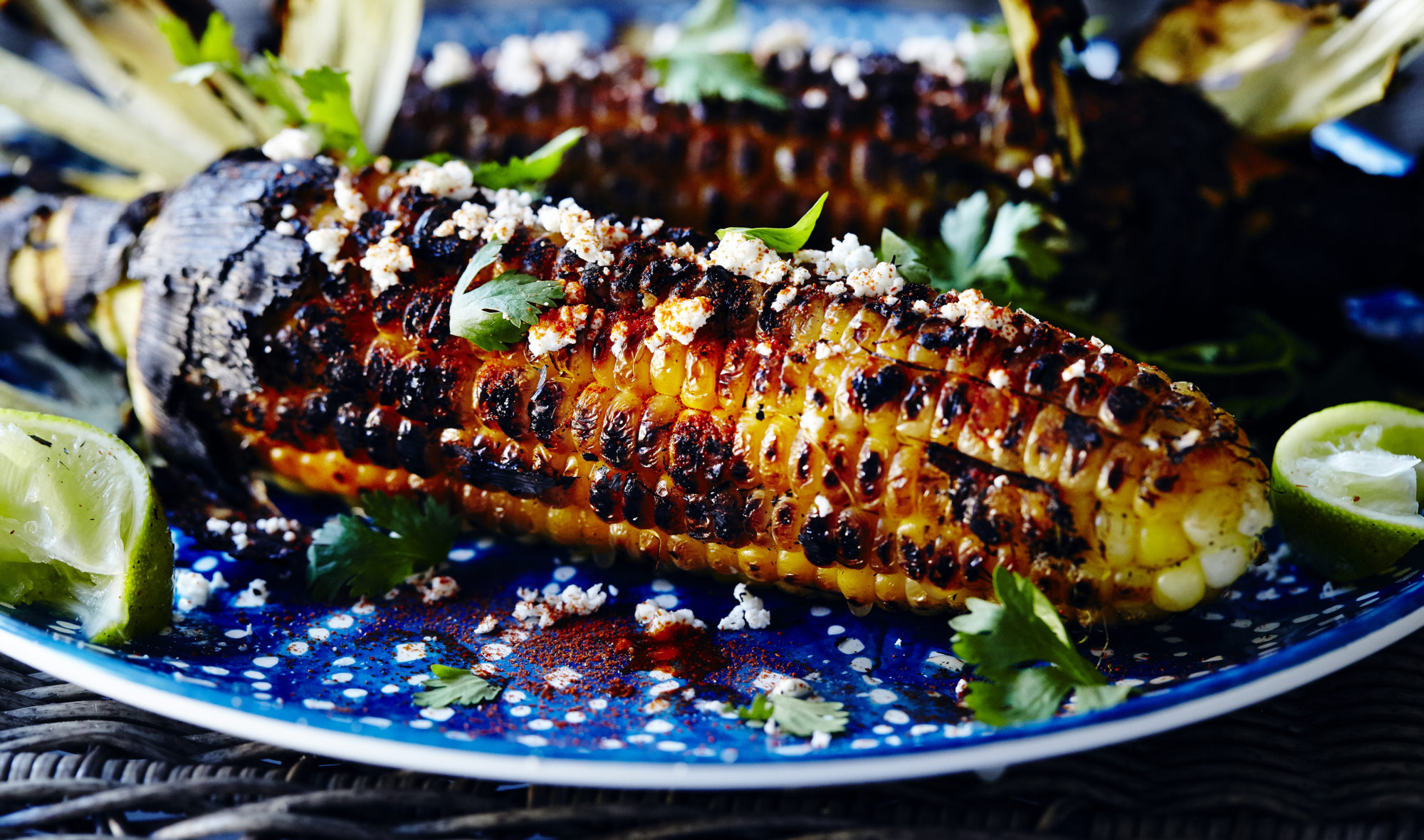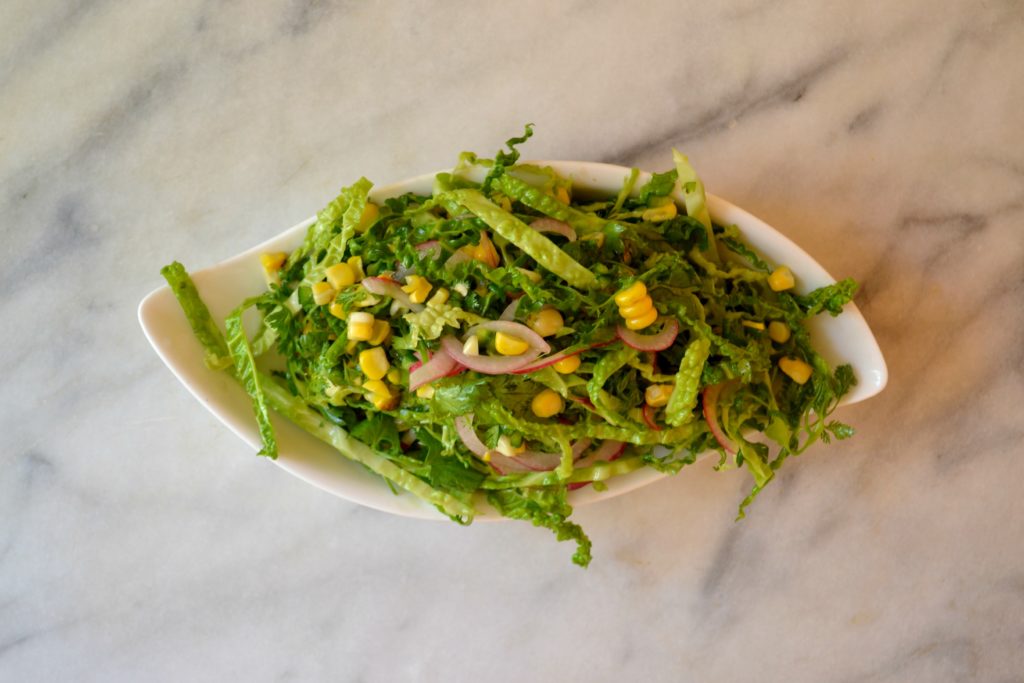
🎁 Holiday Special: SAVE 52% on the Nutrition Coach Starter Package. Limited number remaining.

🎁 Holiday Special: SAVE 52% on the Nutrition Coach Starter Package. Limited # left.

Corn is a cereal grain. Sweet corn is a flavorful and nutritious variety of corn that is seasonal during summer. Sweet corn is packed with vitamins (such as vitamin A, vitamin C, and B vitamins) as well as phytonutrients like beta-carotene, making it a nutrient-dense carbohydrate. Corn also comes in a variety of dried forms: kernels for popping, cornmeal, or corn flour. Sweet corn is best eaten fresh: buy from a farm or farmers’ market when you can, and avoid husking the ears before cooking time. To cook, simply boil the husked ears of corn or grill them on the barbecue for a summertime treat.
Corn, also called maize, is a cereal grain.
Sweet corn is a variety of corn. The kernels of sweet corn become tender when cooked and, as the name implies, taste appealingly sweet.
Various types of sweet corn exist, each with their own nuanced flavor, texture, and sugar content. Sweet corn is enjoyed mainly during the summer months when it’s in season, though frozen or canned sweet corn can be found throughout the year.
If you’re driving along a country road and see corn fields, chances are what you are looking at is not sweet corn: it’s probably dent corn, which may be used for animal feed, corn syrup, corn flour, cornmeal, and/or non-edible products.
Corn is a staple food in many cultures around the world. In particular, Mexican cuisine is known for its use of corn and corn products. Up to 60% of Mexico’s cropland is devoted to this plant. The kernels or whole cobs can be found in soups, the fine meal can be turned into flat tortillas, and a corn-based dough can be steamed inside of a corn husk or banana leaf and made into tamales.
Most of the world’s corn is grown in the United States, with Iowa, Illinois, and Nebraska being the corniest states.
Corn grows on tall, leafy stalks. Each stalk typically has between 1 – 3 ears, containing a cob on which edible kernels grow. The cob is wrapped in thin, wispy corn silk, and then covered tightly by layers of husk.
The corn kernels can be yellow or white, or a combination depending on the variety. (Other varieties of corn are blue, red, or even purple, but you’re not likely to come across these at your typical grocery store.)
Corn can be sold fresh on the cob and tastes sweet and buttery when cooked.
Corn can also be found in a variety of other forms, such as dried kernels for popcorn; cornmeal, a sunny yellow coarsely ground meal; or corn flour, a pale yellow finely ground powder. These products have a mild, starchy flavor with a subtle corn taste.
One medium ear of yellow sweet corn (boiled without salt) contains 99 calories, 3.5g of protein, 1.5g of fat, 21.6g of carbohydrates, 2.5g of fiber, and 4.7g of sugar.
Corn contains potassium, vitamin C, vitamin A, a mix of B vitamins (Niacin, B6 and B5), as well as a host of phytonutrients including beta-carotene and lutein.
Sweet corn is also a gluten-free grain and in its natural form, a whole grain.
Buy the freshest corn you can find. (Buying from a farmer/farmers’ market is ideal.) Look for firm, brightly colored cobs. The stalk of the ear should look like it’s been freshly cut: moist rather than dull and dried-out looking. The silk should be shiny and even a bit sticky – not overly dry or wilted.
Never buy shucked corn. Sweet corn deteriorates quickly after it’s been shucked, so buy cobs with the husks still on, and don’t remove the husk until cooking time.
Resist the urge to peel the husks in the store. If you’re buying from the grocery store (and not from a farm where it’s guaranteed to be fresh), peel the husk back only slightly. Then check for brightly colored, plump kernels without discoloration or insect damage.
If buying dried corn products, such as popping kernels, cornmeal, or corn flour, shop at stores with high product turnover. If you’re purchasing them from a bulk food store, shop at purveyors with covered bins. Look for products that look fresh and don’t show any signs of moisture or discoloration. In the case of popping kernels, look for kernels that are intact and don’t have any holes or dark spots.
For the best flavor and texture, buy corn the day you plan to cook it.
If needed, you can store corn for a few days: store the ears (with husks still on) in a loose, open plastic bag in the vegetable crisper of your refrigerator.
Corn can be frozen, once the kernels are removed from the cob (see instructions below). If you wish to freeze corn, first blanch the kernels in boiling water for 1 – 2 minutes, then rinse in cold water and lay flat to dry on a baking sheet. Once dry, store in an airtight container in your freezer for up to three months.
Cooked corn can be kept in your fridge in an airtight container for a few days.
Dried corn products like popping kernels, cornmeal, or corn flour should be stored in an airtight container in a cool, dry cupboard. While corn flour should be used up within a couple of months (you can extend this lifespan to 6 months if you store it in the freezer), cornmeal and popping kernels will keep for about 2 years, if stored properly.
Arguably, the finest way to enjoy corn is to eat it fresh from the cob. Particularly when it’s in season on a hot summer day.
Here’s how to prepare it:
The first step to cooking sweet corn is to shuck it. Peel off the husk and pull off all the fine silk. (It’s okay if a few pieces of silk remain.) If the stalks are long, you may choose to cut or break them off.
Boiling is, for many, the go-to method for sweet corn. Bring a large stock pot to a boil. Carefully drop the shucked corn cobs into the boiling water. Turn down the heat slightly so it doesn’t boil over, then cook for about 5 minutes. Note that fresh corn requires less cooking time; older cobs may require between 8 – 10 minutes to reach tenderness. The corn is ready when the kernels feel tender and can be easily pierced with a fork.
Grilled sweet corn is a great way to celebrate summer. Rub the shucked corn with a little olive oil and grill at medium-high for about 10 minutes, turning occasionally. To spice up this summer favorite, coat the grilled cobs in butter, a generous dash of smoked paprika and cayenne pepper, and a squeeze of lime juice.
Note: some people prefer to grill their corn while still in the husk. If this is your preferred method, pull the husk open but don’t remove it completely, and pull off all of the silk. This will help prevent burning.
If you have extra cooked corn, cut the kernels off with a sharp knife. To do this, hold the cob vertically, with the blunt end of the stalk firmly on the cutting board. Then slice the kernels off by dragging your knife down the cob from top to bottom. Add the resulting kernels to salads, soups, sautés, or baked goods (like cornbread or corn muffins).

Sweet roasted corn pops in this fresh salad bursting with spice, tang, and flavor. Top with grilled chicken, shrimp, tofu, or tempeh to make the meal complete.
Prep Time: 15 minutes Cook Time: 10 minutes Yield: 4 servings
For the Salad:
First, prepare your quick-pickle onions: Place thinly sliced rounds of red onion in a small bowl, and pour apple cider vinegar on top (just enough to cover). Let sit for about 10 minutes while you prepare the other ingredients, and then drain.
To roast the corn, place your corn (husk removed) directly on the grill over open flame for about 10 minutes, rotating at regular intervals. The corn is done when there is an even char on all sides. Allow to cool, and then using a sharp knife, slice the niblets off the cob.
Once all of your ingredients are prepped, place drained onions, cabbage, roasted corn niblets, and cilantro into a large bowl and prepare the dressing.
For the Dressing:
Place all ingredients in a small bowl or jar and whisk until combined. Add dressing to salad, toss, and serve immediately.
Enjoy!
Precision Nutrition’s Encyclopedia of Food expands every single month as we highlight new foods and showcase beautiful food photography. If you’d like to stay up to date, simply click this link. From there, we’ll send you a FREE copy of our recipe book. We’ll also let you know when new and delicious foods are added to the site.
Corn is a cereal grain. Sweet corn is a flavorful and nutritious variety of corn that is seasonal during summer. Sweet corn is packed with vitamins (such as vitamin A, vitamin C, and B vitamins) as well as phytonutrients like beta-carotene, making it a nutrient-dense carbohydrate. Corn also comes in a variety of dried forms: kernels for popping, cornmeal, or corn flour. Sweet corn is best eaten fresh: buy from a farm or farmers’ market when you can, and avoid husking the ears before cooking time. To cook, simply boil the husked ears of corn or grill them on the barbecue for a summertime treat.